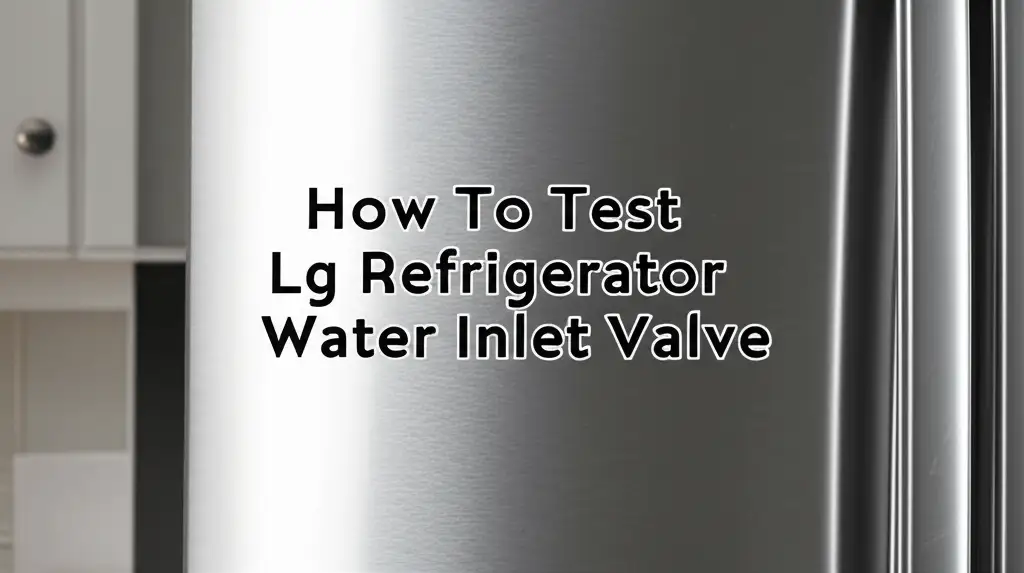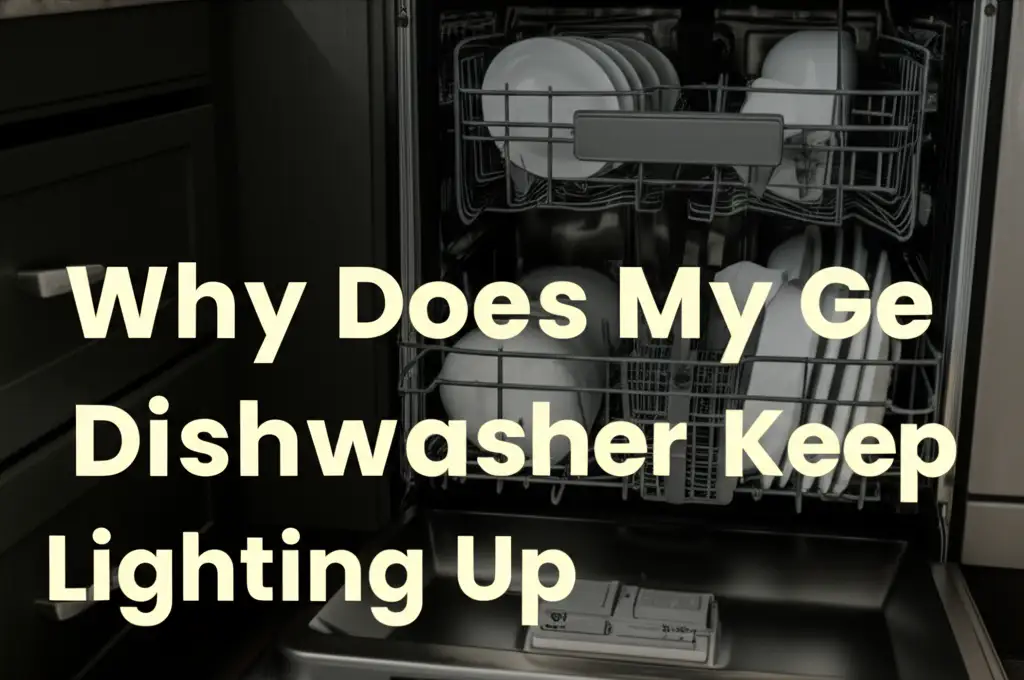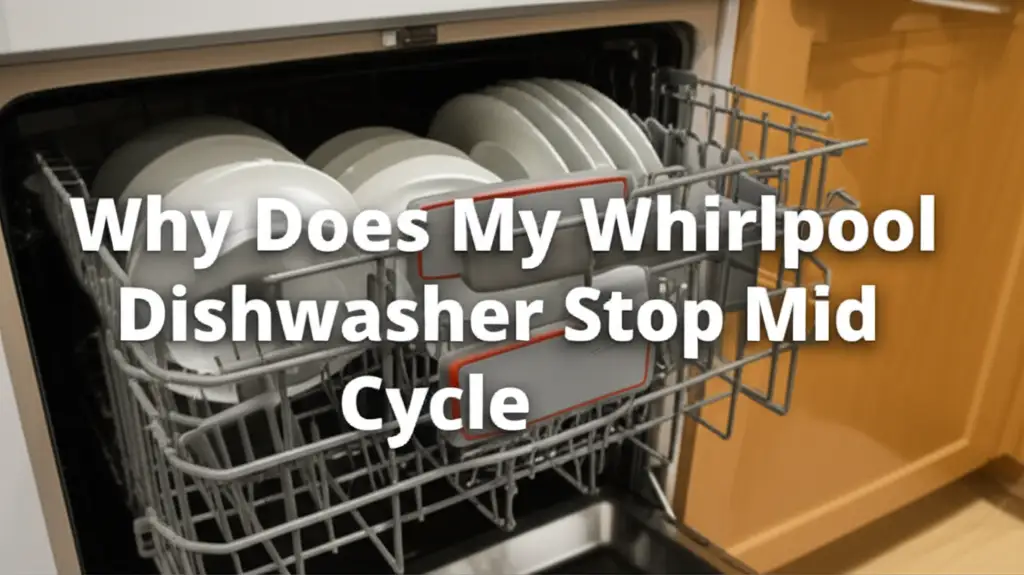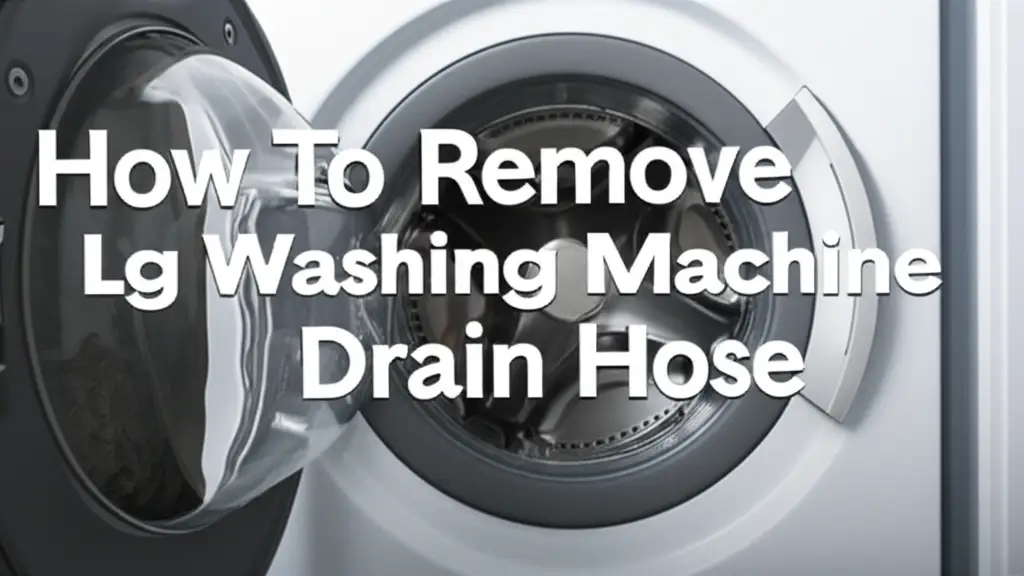· Todd Martin · Appliance Repair · 17 min read
Why Did My Whirlpool Dryer Just Stopped Working
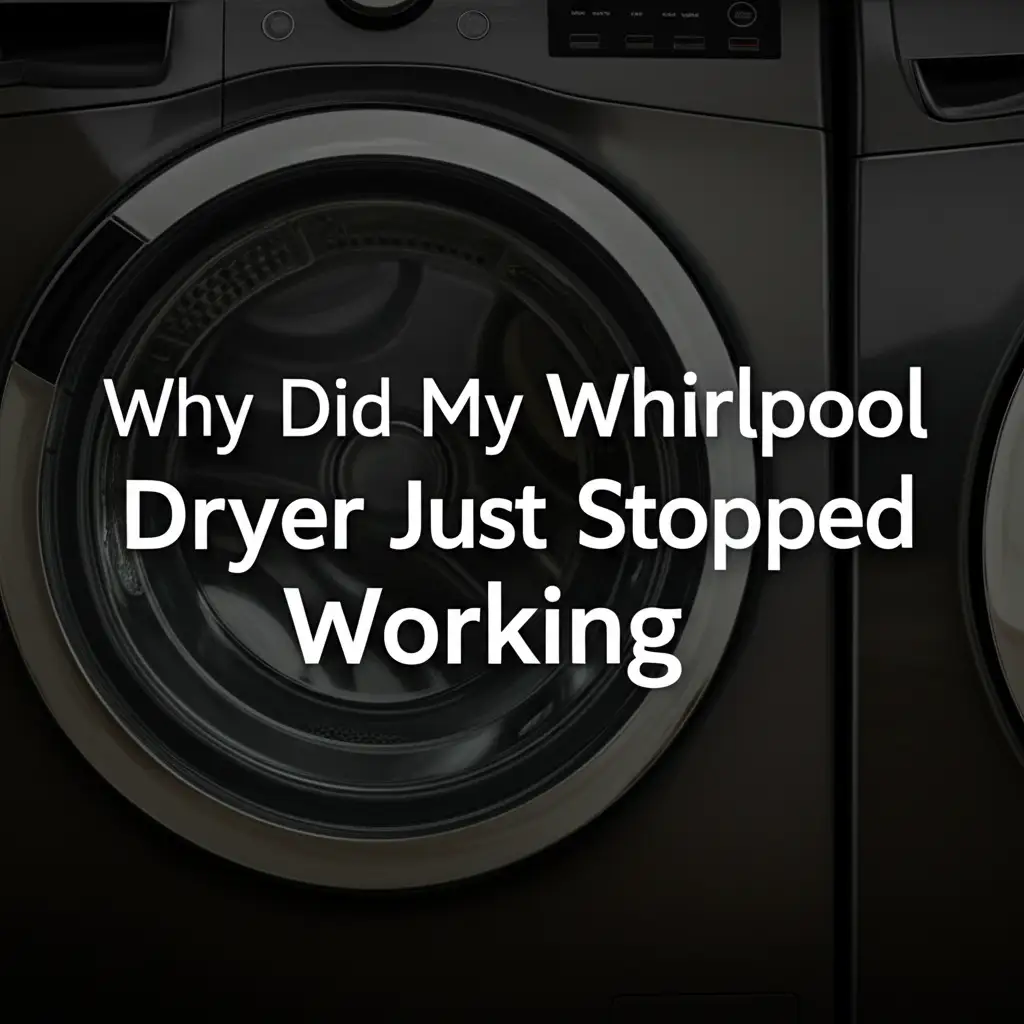
Troubleshooting Your Whirlpool Dryer: Why It Suddenly Stopped Working
Imagine finishing a load of laundry, only to find your Whirlpool dryer just stopped working. The clothes remain wet, and your laundry day hits a sudden snag. This situation is frustrating, but it is also very common. Many homeowners face this exact problem. Understanding why your Whirlpool dryer stopped working can save you time and money.
This guide helps you identify the most common causes for a non-working Whirlpool dryer. We cover everything from simple electrical issues to more complex internal part failures. You will learn practical troubleshooting steps. Our aim is to help you get your dryer running again quickly. We will also discuss when to call a professional. Let’s get your laundry routine back on track.
Takeaway
- Check power first: Confirm the dryer has electricity.
- Inspect lint trap and vents: Clear blockages to prevent overheating.
- Listen for sounds: Clicking or humming can indicate specific part issues.
- Test door switch: A faulty door switch prevents operation.
- Consider internal parts: Components like thermal fuses, belts, or motors can fail.
- Call a professional: If basic troubleshooting fails, seek expert help.
When your Whirlpool dryer just stopped working, common culprits include power supply issues, a tripped circuit breaker, an overloaded lint trap, or a clogged dryer vent. Internal component failures like a blown thermal fuse, a broken drive belt, or a faulty motor can also cause the problem.
Power Problems: Is Your Whirlpool Dryer Getting Electricity?
It feels alarming when your Whirlpool dryer just stopped working. Often, the cause is a simple power problem. Dryers need a lot of electricity. They usually connect to a dedicated 240-volt circuit. Many issues can interrupt this power flow. Checking these basic electrical points first can save you time.
Always start with the power source. Is the dryer plugged in completely? Sometimes, the plug works loose. Next, check your home’s circuit breaker. A tripped breaker is a common reason for a dryer to stop. It prevents electrical overload.
Tripped Circuit Breaker
Your home’s electrical panel has circuit breakers. These small switches protect your appliances. A dryer uses a large amount of power. Sometimes, it can draw too much. This causes the breaker to trip. The breaker switch will be in the “off” or “middle” position.
To reset it, first push the breaker firmly to the “off” position. Then, push it back to the “on” position. If it immediately trips again, a deeper electrical issue exists. Do not ignore repeated trips. This indicates a serious problem. It needs professional attention.
Power Cord Issues
The power cord connects your dryer to the wall outlet. This cord can suffer damage. It might have kinks, cuts, or frayed wires. Visually inspect the entire cord. Look for any signs of wear. A damaged cord prevents power from reaching the dryer.
Also, check the plug itself. Is it securely seated in the wall outlet? A loose connection can stop power. If you find damage, replace the power cord. Do not use a damaged cord. It poses a fire hazard.
Wall Outlet Problems
The wall outlet is where your dryer plugs in. This outlet might be faulty. Test the outlet with another appliance if possible. Plug in a lamp or another small 240-volt appliance. If other appliances also do not work, the outlet itself has a problem.
A loose or damaged outlet can cut power. Do not attempt to fix a faulty outlet yourself. Electrical work requires specific knowledge and safety precautions. Contact a qualified electrician for outlet repairs. They ensure the outlet is safe and provides proper power.
Overheating and Safety: Thermal Fuses and Vents
When a Whirlpool dryer just stopped working, overheating is a common culprit. Dryers produce a lot of heat. They have safety mechanisms to prevent fires. These mechanisms shut down the dryer if it gets too hot. A clogged vent is the most frequent reason for overheating. A faulty thermal fuse is another key component.
Your dryer needs good airflow. This airflow removes moisture and heat. If airflow is restricted, heat builds up inside the dryer. This triggers safety features. Understanding these components helps diagnose the issue.
Clogged Dryer Vents
A clogged dryer vent is a major safety hazard. Lint accumulates in the vent system over time. This lint restricts airflow. Restricted airflow causes the dryer to overheat. When the dryer overheats, a safety thermostat or thermal fuse activates. This shuts down the dryer completely.
You should clean your dryer vent regularly. Detach the vent hose from the back of the dryer. Remove any visible lint. Use a vacuum attachment or a long brush to clean inside the hose and the wall vent. A professional vent cleaning service can perform a thorough job. They reach deeper into the ductwork. Proper vent cleaning prevents overheating. It also improves dryer efficiency. Learn more about how to clean your dryer and specifically how to clean Whirlpool dryer components to maintain optimal performance.
Failing Thermal Fuse
The thermal fuse is a small safety device. It is designed to blow or “fail” if the dryer’s temperature exceeds a safe limit. Once the thermal fuse blows, it permanently breaks the electrical circuit. This prevents the dryer from operating. It protects against fire. A blown thermal fuse means the dryer will not start or run.
You cannot reset a thermal fuse. You must replace it. Before replacing, find the reason it blew. Most often, a clogged vent or blocked lint screen caused it. Address the overheating issue first. Otherwise, the new fuse will blow again. Replacing a thermal fuse typically requires accessing the dryer’s interior. This might be on the back panel or near the blower housing. This issue often makes your Whirlpool dryer keep turning off unexpectedly.
Malfunctioning Thermistor
Some Whirlpool dryers use a thermistor instead of or in addition to a simple thermostat. A thermistor is a sensor. It monitors the temperature inside the dryer. It sends temperature readings to the control board. If the thermistor sends incorrect readings, the dryer might shut down. It might think it is overheating when it is not.
A faulty thermistor can also cause inconsistent heating. It can even prevent the dryer from starting. You can test a thermistor with a multimeter. Check its resistance. Compare the reading to the manufacturer’s specifications. If the readings are off, replace the thermistor. This repair often requires disassembling part of the dryer.
Mechanical Failures: Belt, Motor, and Pulley Issues
When your Whirlpool dryer just stopped working, and power is confirmed, mechanical components are the next suspects. Inside your dryer, a series of parts work together to turn the drum. These include the drive belt, the motor, and the idler pulley. If any of these fail, the drum will not spin. The dryer might hum, or it might make no sound at all.
Diagnosing mechanical issues often involves opening the dryer. You may need to remove the top, front, or back panels. Always unplug the dryer before beginning any internal inspection. Safety is paramount when working with appliances.
Broken Drive Belt
The drive belt wraps around the dryer drum, the motor pulley, and the idler pulley. It is responsible for rotating the drum. Over time, the belt can become worn, stretched, or even break. If the drive belt breaks, the motor may run, but the drum will not spin. You might hear the motor humming. You will not hear the drum tumbling.
You can often hear a broken belt rattling inside the dryer. To check, open the dryer door. Try to turn the drum by hand. If it spins very easily and with no resistance, the belt is likely broken. Replacing a drive belt is a common repair. It requires removing panels to access the drum and motor.
Worn Idler Pulley
The idler pulley maintains tension on the drive belt. It keeps the belt tight around the drum and motor. Over time, the pulley can wear out. Its bearing might seize up. This causes friction and resistance. A worn idler pulley can make a squealing or grinding noise. If it seizes completely, the belt cannot move. This stops the dryer drum from spinning.
A faulty idler pulley can also cause the belt to slip off or break prematurely. You can usually inspect the idler pulley after removing the dryer’s top or front panel. Check for smooth rotation. Look for any play in the pulley arm. Replace the pulley if it feels rough or sticks.
Faulty Drive Motor
The drive motor powers the dryer. It spins the drum and often also the blower fan. If the drive motor fails, the dryer will not start. It might make a humming noise without any drum movement. This indicates the motor is trying to run but cannot. A bad motor can be due to worn bearings or internal electrical failure.
Testing a dryer motor requires a multimeter. You check the motor windings for continuity. Replacing a drive motor is a more complex repair. It often involves disconnecting several wires and removing other components. If your Whirlpool dryer turns on but not start, a faulty motor is a strong possibility. Consider professional help for motor replacement.
Door Switch and Lint Trap: Simple Yet Critical Issues
Sometimes, when your Whirlpool dryer just stopped working, the problem lies with simple, external components. The door switch and the lint trap are two such areas. These parts are often overlooked. Yet, they play a critical role in dryer operation. They are easy to check.
Before diving into complex internal repairs, always check these common culprits. A quick check can save you a lot of troubleshooting time. These issues are often simple DIY fixes.
Defective Door Switch
The door switch is a safety feature. It prevents the dryer from running when the door is open. If the door switch is defective, the dryer’s control system thinks the door is open, even when it is closed. This prevents the dryer from starting or running. You might close the door, but the dryer remains unresponsive.
To test the door switch, you can press it manually. When you close the door, it presses a small button or lever. Listen for a click. If you do not hear a click, the switch might be stuck. You can also use a multimeter to check for continuity. With the door open, the circuit should be open. With the door closed, it should be closed. If it fails, replace the switch. This is typically an easy part to replace.
Overfilled Lint Trap
The lint trap collects lint from your clothes. It is a vital part of the dryer. It prevents lint from entering the exhaust system. An overfilled lint trap restricts airflow. Restricted airflow causes the dryer to overheat. As mentioned before, overheating triggers safety shutdowns.
If your Whirlpool dryer just stopped working mid-cycle, check the lint trap first. Clean it after every load. Pull it out and remove all the lint. A clogged lint trap can cause your dryer to stop unexpectedly. It also makes your dryer less efficient. It can increase drying times. Regular cleaning is crucial for dryer performance and safety. Proper lint trap cleaning is part of keeping your Whirlpool dryer clean.
Control Board and Sensor Malfunctions
When your Whirlpool dryer just stopped working, and you have ruled out power and common mechanical issues, the problem might be electronic. Modern dryers use sophisticated control boards and various sensors. These components manage all aspects of the drying cycle. A malfunction in these parts can cause the dryer to stop working entirely or behave erratically.
Diagnosing control board or sensor issues can be more challenging. It often requires advanced diagnostic skills. These repairs can also be more expensive.
Electronic Control Board Failure
The electronic control board is the “brain” of your Whirlpool dryer. It receives input from sensors. It sends commands to the motor, heater, and other components. If the control board fails, the dryer might not respond to commands. It might not start, or it might stop mid-cycle. You might see no display lights, or error codes may flash.
Signs of a faulty control board include unresponsive buttons, strange flashing lights, or the dryer simply doing nothing. Testing a control board is difficult for the average homeowner. It usually requires specialized tools and knowledge. If other components check out, the control board could be the culprit. Replacement can be costly. Consider the dryer’s age before replacing the control board. This is similar to why your Whirlpool microwave is not working but has power or why your Whirlpool oven touch screen is not working, as it points to a control system issue.
Moisture Sensor Problems
Many Whirlpool dryers use moisture sensors. These sensors detect the amount of moisture in the clothes. They signal the dryer to stop when clothes are dry. If the moisture sensors are faulty, they might give incorrect readings. The dryer could stop prematurely. It might think the clothes are dry when they are still wet. Or, it could run indefinitely.
Moisture sensors are typically two metal strips located inside the drum. Lint buildup on these strips can prevent accurate readings. Clean the sensors with a rubbing alcohol pad. This removes any residue. If cleaning does not help, the sensors might be faulty. Replacement is possible but often requires accessing the dryer’s front panel.
Starting Capacitor Issues
The starting capacitor works with the drive motor. It provides an initial burst of electricity. This burst helps the motor overcome inertia. It gets the motor spinning. If the starting capacitor is weak or failed, the motor may not start. You might hear a humming sound from the motor, but no drum movement.
A bad starting capacitor can prevent your Whirlpool dryer from starting at all. You can test a capacitor with a multimeter. It requires discharging the capacitor first. Capacitors can store a charge. They can deliver a dangerous electrical shock. If you suspect a faulty capacitor, consider professional help. Replacing it yourself requires extreme caution.
Overloading and Installation Considerations
Sometimes, the reason your Whirlpool dryer just stopped working is not a component failure at all. It can be related to how you use or how you installed the appliance. These factors are easy to overlook. Yet, they can significantly impact your dryer’s performance and longevity. Addressing these points can prevent future issues.
Consider your laundry habits. Also, think about the dryer’s placement in your home. These aspects contribute to how well your dryer functions. Ignoring them can lead to unexpected shutdowns.
Overloading the Drum
Every dryer has a maximum capacity. Overloading the drum with too many clothes can cause problems. A heavy load puts excessive strain on the dryer’s motor and drive belt. The motor works harder to spin the heavy drum. This extra strain can cause the motor to overheat. It can also cause the drive belt to slip or break.
If the motor overheats, its internal thermal protector activates. This shuts down the dryer to prevent damage. Always follow your dryer’s capacity guidelines. Distribute clothes evenly in the drum. This ensures proper tumbling and airflow. It reduces stress on components. It also helps clothes dry more efficiently.
Improper Installation or Leveling
The way your dryer is installed can affect its operation. Improper leveling is a common issue. If the dryer is not level, the drum can become unbalanced. This puts uneven stress on the drive components. It can lead to premature wear. It might even cause the dryer to stop working due to excessive vibration or component misalignment.
Ensure your dryer sits on a stable, level surface. Adjust the leveling feet at the bottom of the dryer. Use a spirit level to check stability. Proper venting is also crucial. The dryer vent hose should be as short and straight as possible. Kinks or long runs reduce airflow. Reduced airflow causes overheating. This can make your dryer stop unexpectedly. Proper installation ensures safe and efficient operation.
What to Do When Professional Help is Needed
It is empowering to troubleshoot your Whirlpool dryer when it just stopped working. Many common issues have simple fixes. However, there are times when DIY efforts are not enough. Some problems are too complex or too dangerous for home repair. Knowing when to call a professional technician is important. It ensures safety and prevents further damage to your appliance.
A qualified appliance repair technician has the tools and expertise. They can diagnose complex issues quickly. They also ensure repairs are done correctly. Do not hesitate to seek professional help.
When to Call a Technician
You should call a technician if:
- You have checked all the basic power sources, lint traps, and circuit breakers.
- The dryer is still not working after cleaning vents and lint screens.
- You suspect a faulty motor, control board, or other complex internal components.
- You hear unusual noises like grinding or burning smells. These indicate serious problems.
- You do not feel comfortable working with electrical components or disassembling the dryer.
- The dryer continues to trip the circuit breaker. This indicates a persistent electrical fault.
- The dryer is under warranty. Performing DIY repairs might void the warranty.
Professional technicians have access to diagnostic tools. They also have original manufacturer parts. This ensures a proper and lasting repair. Prioritize safety over saving a few dollars.
Finding Reliable Service
Finding a reputable appliance repair service is key. Start by asking for recommendations from friends, family, or neighbors. Check online reviews and ratings. Look for technicians certified to work on Whirlpool appliances. Certification indicates proper training and expertise.
Get multiple quotes if possible. Compare repair costs. Ensure the service provides a warranty on their work and parts. A good technician will explain the problem clearly. They will also outline the repair process. Do not choose a service based on price alone. Reliability and expertise are more important. A professional service provides peace of mind. They get your Whirlpool dryer running safely again.
FAQ Section
Why does my Whirlpool dryer turn on but not start?
If your Whirlpool dryer turns on but the drum does not spin, check the drive belt. It might be broken or slipped. A faulty door switch or a seized idler pulley can also prevent the drum from starting. Lastly, a defective motor or starting capacitor might be the cause, requiring professional assessment for repair.
Can a clogged vent stop a dryer from working?
Yes, a clogged dryer vent can definitely stop a dryer from working. Lint buildup restricts airflow, causing the dryer to overheat. Most dryers have a thermal fuse or thermostat that blows or trips when temperatures get too high. This safety mechanism shuts down the dryer completely to prevent fires.
How do I reset a Whirlpool dryer?
To reset a Whirlpool dryer, first unplug it from the wall outlet for at least 5-10 minutes. This allows the internal components and control board to fully discharge. Plug it back in after the waiting period. If the dryer has a specific reset button or function, consult your owner’s manual for instructions.
What are common electrical issues for a dryer?
Common electrical issues for a dryer include a tripped circuit breaker, a loose or damaged power cord, or a faulty wall outlet. Less common but serious issues involve internal wiring problems or a defective electronic control board. Always check the basic power supply before looking at internal electrical faults.
Is it worth repairing an old Whirlpool dryer?
Deciding whether to repair an old Whirlpool dryer depends on the repair cost versus the cost of a new dryer. Consider the dryer’s age and overall condition. If the repair cost exceeds 50% of a new dryer’s price, or if the dryer is very old (over 10-15 years), replacement might be more economical in the long run.
Why did my dryer stop mid-cycle?
Your dryer stopping mid-cycle often indicates an overheating issue. This is usually due to a clogged lint trap or a blocked dryer vent restricting airflow. A faulty thermal fuse or thermostat can also cause this. Less commonly, an intermittent electrical connection or a control board malfunction could be the reason.
Conclusion
Finding your Whirlpool dryer just stopped working can disrupt your routine. However, many common issues have straightforward solutions. We covered everything from basic power problems like tripped circuit breakers and damaged cords to critical components like thermal fuses, drive belts, and door switches. We also discussed electronic issues with control boards and sensors. Simple steps, like cleaning your lint trap and dryer vents, can prevent many future breakdowns. Overloading the dryer or improper installation can also contribute to problems.
By systematically troubleshooting these common culprits, you can often diagnose and fix the problem yourself. Remember, safety comes first. Always unplug your dryer before attempting any internal repairs. If you are uncomfortable with a repair or if the issue seems too complex, professional help is the best option. Do not hesitate to call a certified technician. Your goal is to get your Whirlpool dryer running smoothly again. Regular maintenance and prompt attention to issues ensure your dryer provides years of reliable service.


